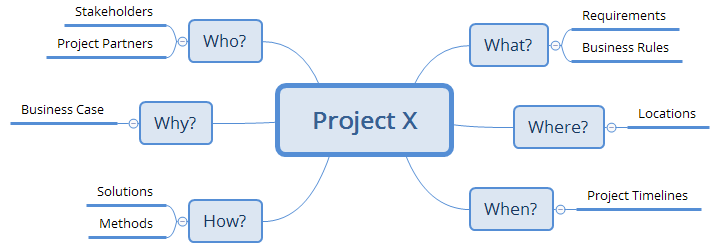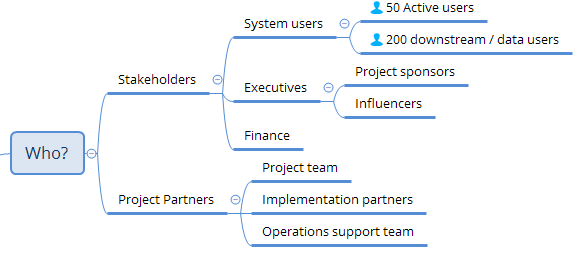AI and the Digital BA—What’ It All About? Part 3
This is the last of a three-part article written with answers to some of the most frequently-asked questions I get about artificial intelligence (AI).
In Part 1, I addressed some common terms and issues related to AI as it is used in a business context. In part 2, I focused on the various roles that BAs play on AI efforts. In this article I will discuss various subjects like the need for AI translators, the importance of AI governance, and the digital PM. As with Parts 1 and 2, I will use a Q/A format.
Why is the role of AI translator so important?
Recently there have been numerous articles in journals like Forbes and Harvard Business Review (HBR) about the need for an AI translator role, someone who acts as a go-between between the organization’s data scientist and strategic decision-makers. These articles don’t mention the BA specifically, but their descriptions are consistent and describe a role that BAs have routinely played—that of ensuring that business stakeholders and technical staff understand each other. I think the AI translator is a perfect role for any experienced BA. Data scientists need to understand the strategic direction of the organization, the business need for the initiative, and the related business rules that will be required on many of the AI systems. Business stakeholders need to understand the impacts of their decisions.
In the early days of AI, it was not uncommon for data scientists to guess at the business rules and make AI-related decisions themselves. This did not go well, as documented in Computer World.[i] The next phase was to have data scientists get input directly from the business. This, too, did not go well. So some organizations have introduced an intermediary role—the AI translator. They understand that they need to have someone who understands the importance of business input and who can also speak comfortably with the data scientists—a translator role. That’s where the BA comes in. We’ve always been translators. Translating the requirements into designs and back to ensure stakeholders get the functionality they ask for and really need. Yes, this is a perfect role for the BA and one that can greatly contribute to successful AI projects.
How much governance is needed on AI initiatives?
Many of the challenges on AI initiatives are no different from those on other projects. In a survey published in Information Magazine in July 2019, respondents included these factors as the major challenges:[ii]
- 50% – Lack of leadership buy-in
- 49% – Lack of metrics, especially surrounding data (bad data, ownership, etc.)
- 37% Internal conflict
- 31% Time required to implement (takes longer than expected)
- 29% Unexpected costs
What do these factors have to do with governance? Each one directly relates.
- Executive buy-in. Among other things, no executive buy-in makes it almost impossible to reach consensus on the need for and nature of governance itself.
- Data metrics. Governance guides such metrics as how accurate historical data needs to be.
- Internal conflict. Governance establishes guiding principles around conflict, how it will be resolved, and by whom.
- Time and cost overruns. Project governance will help such things as keeping projects on track, how and when to communicate when they’re not, and even what “longer than expected” means, so forth.
The article goes on to suggest that in order have successful AI initiatives, organizations need to hire data stewards to manage and coordinate the organization’s data. The data steward would be a steward in the real sense of that word: someone to manage, administer, and generally take care the data. In order to manage and administer, this role needs to help the organization determine what that governance will work and then to be responsible for its governance. Sounds like a BA!
In a podcast, cited in Harvard Business Review (HBR) in August 2019, De Kai and Joanna Bryson join Azeem Azhar to discuss the importance of governance on AI initiatives.[iii] They define governance as coordinating resources involving both internal AI modules and humans. They suggest that there needs to be an independent, oversight group with the authority to apply agreed-upon governance, and I think the seasoned BA is in a perfect position to facilitate this group.
Is there such a thing as a digital PM and if so, how does that role differ from a digital BA?
Digital BAs are similar to all BAs in that they do BA tasks, use BA techniques, and need the same BA competencies (see Part 1). Likewise, digital PMs do PM tasks, use PM techniques, and need PM competencies. They work with the sponsor to charter AI projects and help organizations implement them. Although not yet a common role or title, having someone with experience managing AI projects can be valuable to organizations. Again, they’ll still do their tasks and use their techniques appropriate to PM work, but being a PM on an AI project and coordinating all the resources entailed on such an initiative will most certainly require a healthy working knowledge of AI.
Another way to look at digital PMs is that they use AI systems and tools to manage AI projects. In an article in Forbes Magazine on July 2019, the author focuses on the use of automated AI systems and tools to help digital PMs manage their projects.[iv] He says, “AI, with its unique ability to monitor patterns, is a capable assistant to PMs.” In addition to helping with the routine admin tasks, AI can provide all kinds of predictive analytics. AI tools can look at hidden complexities and all the moving parts inherent in a complex project or program and predict areas of concern, from project slippage to team members behavior and more.
The digital PM, then, is one who not only takes advantage of AI tools to do a better job of managing projects, but also has enough AI expertise to manage complex AI projects.
Does “digital” have to be related to “AI?”
In the past, the term “digital” was used broadly. It referred to any digital project, like development of a website, digital marketing, or developing the organization’s presence on social media. Nowadays the term is generally used to refer to “AI,” which encompasses all things related to machine learning, predictive analytics, and data mining. More recently the terms “AIs” and “AI systems” are also commonly used.
I hope you have enjoyed this three-part series. Look for more AI-related content in the future.
[i] https://www.computerworld.com/article/2484224/12-predictive-analytics-screw-ups.html, Robert Mitchell, July, 2013
[ii] https://www.information-management.com/opinion/data-governance-in-the-age-of-ai-beyond-the-basics, Data Governance in the Age of AI, Gienna Shaw, Information Magazine, July 19, 2019.
[iii] https://hbr.org/podcast/2019/08/governance-in-the-age-of-ai, Podcast, De Kai and Joanna Bryson
[iv] https://www.forbes.com/sites/cognitiveworld/2019/07/30/ai-in-project-management/#195242a6b4a0,, Forbes, Tom Schmelzer, July 30, 2019






